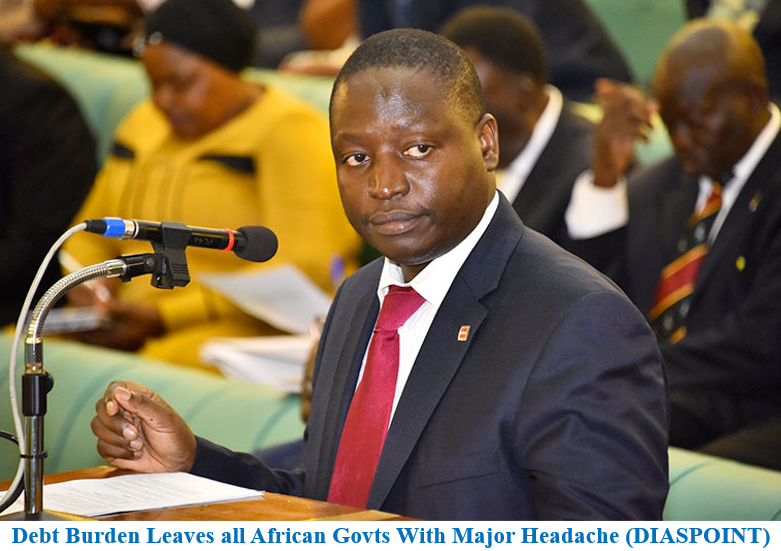Uganda’s Debt Burden Leaves Govt With Major Headache
Post By Diaspoint | June 7, 2024

Some of the key targets that Uganda had set as part of its earlier grand plan on stemming the high levels of debt were wide of the mark, compounding an already difficult situation for government technocrats, and leaving ordinary Ugandans at the mercy of fate should any external shock such as Covid-19 re-emerge.
Uganda is experiencing unprecedented levels of debt, with the amounts growing at a pace that government had not anticipated. The ministry of Finance, Planning and Economic Development says public debt stood at Shs 93.38 trillion at the end of December 2023, up from Shs 80.77 trillion a year earlier, making it the highest amount ever.
To put this amount of debt in context, it means each Ugandan – be it a 90-year-old woman or a three-month-old baby – has a debt of close to Shs 2 million attached on them, some of which they have to pay. That amount, experts warn, will not drop anytime soon, and that should another crisis such as Covid-19 reappear, many fragile businesses will be bumped off the streets.
A country with a high debt level is usually faced with expensive loans from the commercial banks. Ultimately, this feeds into the inflation print, triggering a rise in the prices of goods and services.
In its earlier debt management strategy, Uganda government officials at the ministry of Finance, had set benchmarks for the level of interest payments it needed to pay, and which loans were maturing within a year. These benchmarks were meant to guide government on the solutions it needed in order to pay off its debt. It has emerged, however, that the government underestimated the gravity of the problem, and that the ceilings it set were easily breached.
Read More from original source
